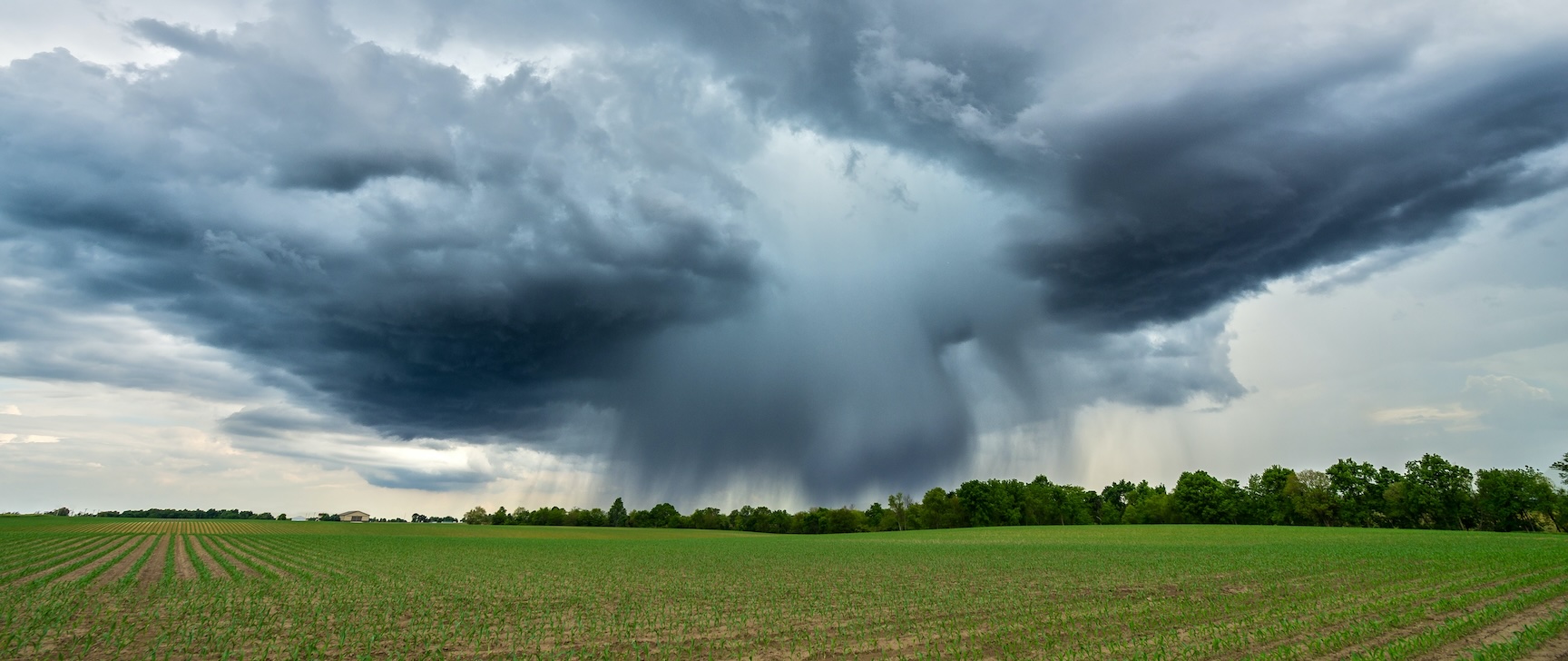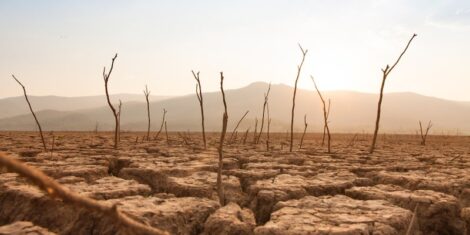We explain what climate is, and describe characteristics and types. In addition, we detail the elements and factors that define climate.

What is climate?
Climate is the set of average atmospheric conditions that occur in a given geographic area over a specific period of time. It refers to the atmospheric patterns and trends in relation to temperature, pressure, winds, rainfall, cloudiness, and humidity.
The climate of a given location is affected and shaped by factors specific to each region, such as altitude, latitude, distance from the sea, topography, and ocean currents.
Climatology is the branch of meteorology that studies climate over time in the different regions of planet Earth. In addition, paleoclimatology examines climate behavior in the past, when no systematic weather records were available. Past climates can be reconstructed up to 600,000 years ago.
There is a wide variety of climate types. Various classifications exist to organize and study them. One of the most widely used is the Köppen climate classification, which identifies five major climate types and numerous subclimates.
Climate or weather? It is important not to confuse the concepts of climate and weather. While weather examines the short-term condition of the atmosphere at a given moment (hence the term "weather forecast"), climate refers to the long-term weather patterns in a specific location over an extended period of time. According to the World Meteorological Organization (WMO), the period designated to define the climate of a given location is 30 years. In this way, weather and climate observe and describe the same factors, but on different time scales.
Characteristics of climate
- It is the set of average atmospheric conditions that occur in a geographic area during a specific period of time.
- It is made up of elements such as temperature, humidity, atmospheric pressure, winds, cloudiness and precipitation.
- It is conditioned by factors such as altitude, latitude, distance from the sea and ocean currents.
- The most used climate classification is Köppen, which establishes five climate types: tropical, dry, temperate, continental and polar.
- See also: Greenhouse effect
Elements of climate

The main elements that compose climate are:
- Temperature. It is the amount of heat in a given location. It can be measured through three scales used in different parts of the world: Celsius (°C), Kelvin (K), or Fahrenheit (°F).
- Humidity. It is the amount of water vapor in the air, originating from the evaporation of Earth’s water bodies, such as seas and oceans. The air's capacity to hold water vapor varies with atmospheric conditions. When the atmosphere cannot hold any more water vapor, relative humidity reaches 100%, significantly increasing the likelihood of rainfall.
- Atmospheric pressure. It is the weight of the air in the atmosphere exerted against Earth's surface. Its intensity depends on altitude and temperature. Pressure is measured using a barometer, which operates on a scale in millibars or hectopascals.
- Wind. It is moving air, affected by variations in atmospheric pressure and temperature changes.
- Precipitation. It is the water vapor in the atmosphere that condenses and falls to the surface of Earth in the form of rain, snow, or hail.
- Cloudiness. It is the formation of clouds caused by the presence of atmospheric humidity. There are three main types of clouds: cumulus, formed at higher altitudes often indicating bad weather; stratus, long, layered clouds at higher altitudes; and cirrus, white, fibrous, or "cotton-like" clouds.
Climate factors
The main factors affecting climate are:
- Latitude. As distance from the equator and latitude increases, temperatures tend to decrease. Polar regions, the farthest from the equator, experience the coldest climates.
- Altitude. As altitude increases, temperatures tend to decrease gradually. In turn, atmospheric pressure and the presence of air in the atmosphere also decrease with elevation.
- Distance from the sea. As distance from the sea or large bodies of water increases, temperature range widens. This means the difference between minimum and maximum temperatures in a given location becomes greater.
- Pressure centers. Areas with higher atmospheric pressure typically have lower temperatures. Conversely, areas with lower atmospheric pressure are usually warmer.
- Ocean currents. Ocean currents significantly influence climatic conditions in continental landmasses. These currents can be warm or cold, and may cause an increase or decrease in temperatures and rainfall in coastal and inland regions.
Climate types
The Köppen climate classification is one of the most widely used systems to classify the different climate types on Earth. It was designed by German climatologist Wladimir Köppen in the early 20th century and has been widely adopted due to its simplicity and ability to represent climate variability across regions.
Köppen identifies five major climate types, each of which is assigned a capital letter from A to E. Each climate type, in turn, has subtypes, denoted by lowercase letters indicating temperature and seasonal precipitation variations.
Under the Köppen climate classification, the five climate types and their subtypes are:
- Tropical climate. This climate features warm temperatures above 64°F (18°C) year-round and abundant rainfall, ranging from 31 to over 98 inches (800 - 2500+ mm) annually. It has three subtypes: tropical rainforest, tropical monsoon, and tropical savanna.
- Arid or dry climate. This climate is characterized by scarce rainfall all year round. It has four subtypes: hot semi-arid, cold semi-arid, hot desert, and cold desert climates.
- Temperate climate. A temperate climate has a monthly mean temperature above 72°F (22°C) in the warmest months, and above 32°F (0°C) in the coldest months. Annual precipitation ranges between 24 and 79 inches (600 - 2000 mm). It has three subtypes: humid temperate, dry-summer temperate (Mediterranean climate), and subhumid temperate (Monsoon temperate climate).
- Continental climate. A continental climate is located far from oceans. It features pronounced daily and annual temperature variations, with hot summers and very cold winters. Precipitation is scarce. It presents a wide variety of subtypes based on temperature and precipitation patterns, these subtypes being: humid continental, dry-summer continental, dry-winter continental, hot-summer continental, warm-summer continental, and continental with severe winters.
- Polar climate. This climate is defined by a mean temperature of less than 50°F (10°C) in the warmest month. It is mainly found in polar latitudes and high-altitude regions. It has three subtypes: tundra polar, ice cap polar, and nival polar.
Each of these five climate types is further divided into several subtypes:
| Climate type | Subtypes |
|---|---|
| Tropical (A) | Tropical rainforest Tropical monsoon Tropical savanna |
| Arid (B) | Hot semi-arid Cold semi-arid Hot desert Cold desert |
| Temperate (C) | Humid temperate Dry-summer (Mediterranean) Subhumid (Monsoon) |
| Continental (D) | Humid Dry summer Dry winter Hot summer Warm summer With severe winters |
| Polar (E) | Tundra Ice cap Nival |
References
- Goudie, A (1993). La Naturaleza del Ambiente. Oxford.
- Terrasa, D. (2018). Clasificación climática de Köppen. https://geografia.laguia2000.com/
- Nuñez, S. (2020). Elementos y factores del clima. https://www.ecologiaverde.com/





Was this information useful to you?
Yes NoThank you for visiting us :)